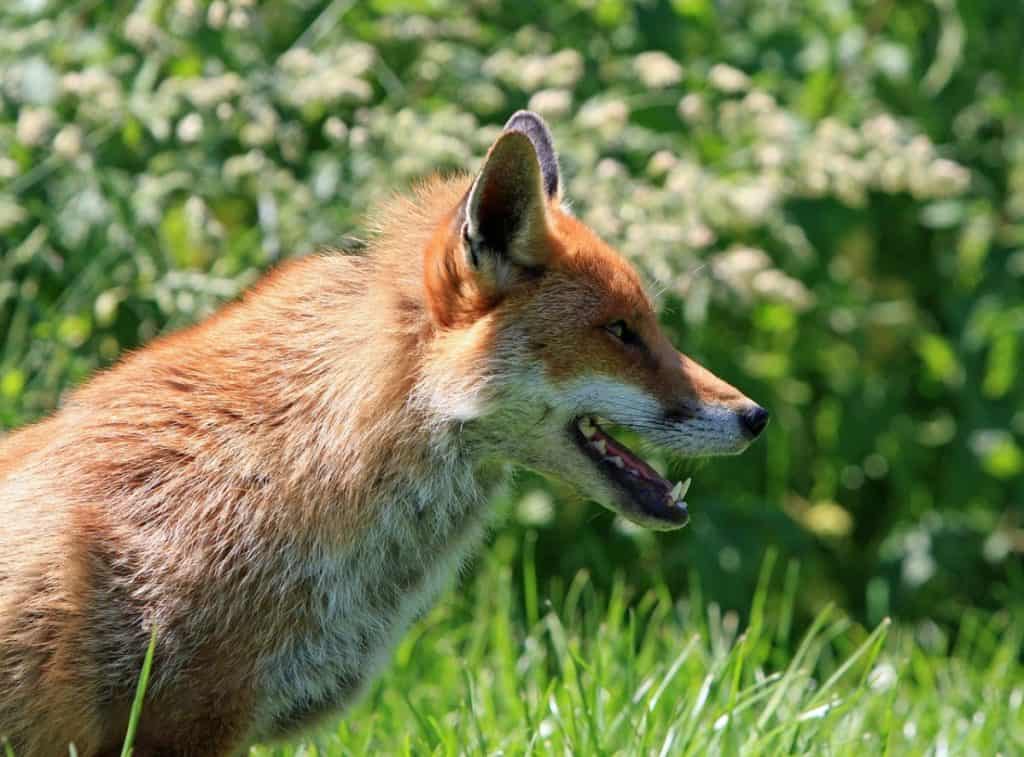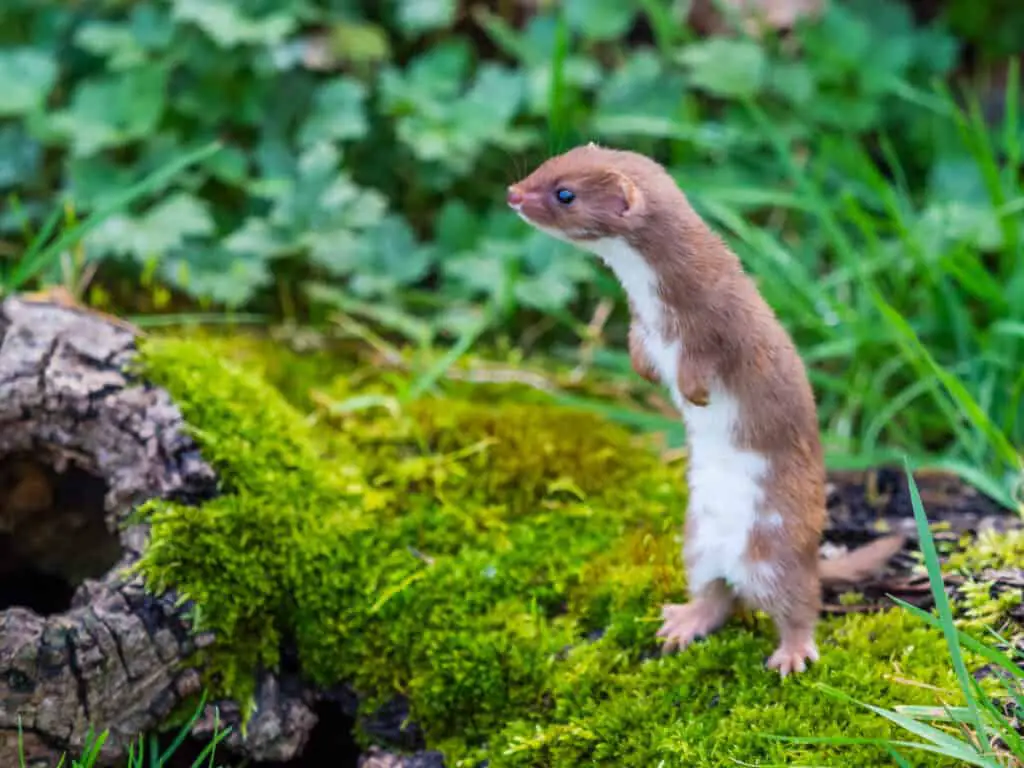Chipmunks are small, omnivorous rodents that make their homes in a variety of habitats across North America. They play an important role in the ecosystem as seed dispersers and prey for larger animals. However, they also have many predators that pose a threat to their survival.
The predation of chipmunks is a complex topic with many factors at play. From birds of prey to snakes and mammals such as foxes and weasels, there are numerous species that actively hunt these rodents.
Understanding the interactions between chipmunks and their predators can provide valuable insights into the dynamics of ecosystems and how they may be impacted by environmental changes or human activities.

Birds Of Prey
Birds of prey are among the most significant predators of chipmunks. These birds possess keen vision, hearing, and talons that help them detect and capture their prey.
Behavioral adaptations in these birds enable them to be effective hunters of rodents such as chipmunks. For example, some species like hawks have a unique hunting technique known as ‘wait-and-watch.’ They perch on high points such as trees or poles and wait for small mammals like chipmunks to move around before swooping down swiftly to grab them. Other raptors like eagles can spot potential prey from several miles away while soaring at great heights.
The impact of birds of prey on rodent populations is profound. Their population density often correlates with the abundance of rodents in an area. When there is a high number of rodents available, bird populations increase correspondingly since they have ample food sources readily available.
Consequently, this helps regulate the population size of rodents including chipmunks who may otherwise cause damage to crops or homes if left unchecked.
Overall, birds of prey serve an essential role in controlling rodent populations and maintaining ecosystem balance through their predatory behavior towards animals such as chipmunks.
Snakes
Snakes are one of the most common predators that prey on chipmunks. These small rodents make a tasty meal for many species of snakes, including garter snakes, rattlesnakes, and copperheads. Snakes can be particularly successful in capturing chipmunks due to their ability to move silently through grass and other vegetation, allowing them to sneak up on their prey undetected.
However, chipmunks have developed several defense mechanisms to help protect themselves from predation by snakes. One such mechanism is their exceptional speed and agility, which allows them to outrun most snake species. Additionally, chipmunks may use their keen sense of smell and hearing to detect approaching snakes and avoid them altogether. Finally, some researchers have suggested that chipmunks may produce high-pitched vocalizations or release chemical cues when threatened by snakes as a warning signal to other members of their colony.
Several snake species are known to prey on chipmunks. Here are a few examples:
- Eastern Rat Snake (Pantherophis alleghaniensis): This non-venomous snake is found in eastern North America and is known to feed on a variety of small mammals, including chipmunks.
- Western Rattlesnake (Crotalus viridis): Found in western North America, the Western Rattlesnake is a venomous snake that preys on small mammals, including chipmunks, as part of its diet.
- Gopher Snake (Pituophis catenifer): Gopher snakes, which are non-venomous, inhabit various regions of North America. They are constrictors and feed on a range of small animals, including chipmunks.
- Northern Water Snake (Nerodia sipedon): While primarily aquatic, the Northern Water Snake can also be found in terrestrial habitats near water bodies. These non-venomous snakes consume small mammals like chipmunks, as well as amphibians and fish.
- Bullsnake (Pituophis catenifer sayi): Bullsnakes are large, non-venomous snakes that inhabit grasslands and shrublands in North America. They are known to feed on rodents, including chipmunks.

Foxes
The fox, a member of the Canidae family, is one of the main predators that threaten the survival of chipmunks. Foxes are highly skilled hunters and have developed unique hunting behaviors that enable them to capture their prey easily. They use their excellent sense of smell and hearing to locate their targets and then stealthily approach them before pouncing on them with incredible speed and agility. Additionally, foxes can climb trees when necessary, which makes it easier for them to catch small mammals like chipmunks.
Chipmunks must develop strategies for avoiding detection by foxes if they want to survive in areas where these predators live. Some common methods include burrowing underground or escaping into dense vegetation such as bushes or shrubs where foxes cannot reach them. However, even these strategies may not always work since foxes are also great at digging holes and can find ways to access hiding places.
Therefore, some chipmunks will freeze in place when they detect a predator nearby in hopes that they go unnoticed. To better understand how fox hunting behavior affects chipmunk populations, researchers have studied the relationship between both species extensively. Here are some key findings:
- Fox predation has been found to impact local chipmunk populations significantly.
- Certain habitats offer more protection against fox predation than others.
- Chipmunk’s ability to detect potential threats depends on various factors such as light intensity and habitat complexity.
- The presence of other ground-dwelling animals can provide additional cover for chipmunks from predators like foxes.
In conclusion, while there are several predators that pose a threat to the survival of chipmunks, foxes remain one of the most significant ones due to their exceptional hunting skills. To avoid being caught by these predators, chipmunks rely on various defense mechanisms such as burrowing underground or freezing in place when detected. Nonetheless, fox predation remains a significant factor that affects chipmunk populations, and more research is needed to better understand this complex predator-prey relationship.

Weasels
The mention of weasels, one of the natural predators of chipmunks, may evoke mixed emotions in some individuals. While some may feel fascinated by these sleek and agile hunters, others might find them slightly intimidating or even scary.
Regardless of one’s personal feelings towards them, weasels are known for their hunting habits and their significant impact on chipmunk populations.
When it comes to the predator-prey relationship between weasels and chipmunks, there is a lot to unpack. Weasels are skilled hunters who rely heavily on their speed and agility to catch prey. They have been observed stalking and pouncing on unsuspecting chipmunks with impressive accuracy.
Unfortunately for the chipmunks, they make up a significant portion of the weasel’s diet, which can have serious implications for their population numbers if left unchecked.
In contrast to other predators such as hawks or snakes that take adult chipmunks, many studies suggest that weasels preferentially target juvenile animals due to their smaller size and weaker defenses. However, this does not mean that adult chipmunks are entirely safe from predation either; larger weasels (such as long-tailed ones) can still pose a threat to full-grown individuals under certain circumstances.
Overall, while it is clear that weasels play an important role in regulating chipmunk populations in ecosystems where both species coexist, their presence can also be cause for concern when considering conservation efforts aimed at protecting vulnerable rodent populations.
Curious about Chipmunks’ Senses? Let’s Explore How Good They Are!

Domestic Cats And Dogs
Weasels are one of the main predators of chipmunks in their natural habitat. However, domestic cats and dogs also pose a threat to these small rodents. Despite being pets, both cats and dogs have retained some of their predatory instincts from their wild ancestors.
While both cats and dogs hunt for prey, there are differences between their hunting behaviors that can impact their success rate in catching chipmunks. Cats are stealthy hunters who rely on stalking and ambush tactics to catch their prey. They use short bursts of energy to pounce on unsuspecting victims.
In contrast, dogs are more likely to chase after prey using endurance rather than speed or agility. This means they may not be as successful at catching elusive chipmunks hiding in burrows or trees.
To better understand the impact of domestication on pet predator instincts, it is important to note that selective breeding has played a significant role in shaping behavior patterns over time. Domesticated animals have been bred for specific traits such as docility towards humans, leading them to become less aggressive towards potential prey.
Additionally, frequent interaction with humans has resulted in many household pets losing the ability to survive independently without human assistance. As a result, while domesticated cats and dogs still retain some predatory instincts, they may not be as efficient at hunting as their wild counterparts.
- Ways owners can prevent cat predation on chipmunks:
- Keeping cats indoors
- Providing indoor enrichment activities
- Using collars or bells to alert wildlife of the cat’s presence
- Ways owners can prevent dog predation on chipmunks:
- Supervising outdoor playtime
- Training dogs with commands like ‘leave it’ or ‘drop it’
- Using physical barriers like fences or leashes – Providing mental stimulation with puzzle toys or interactive games to redirect their prey drive.
Environmental Factors Affecting Predation
The survival of chipmunks is often threatened by predators, which can vary depending on the geographical location and habitat. The natural environment plays a crucial role in determining the number and types of predators that feed on chipmunks. In addition to predators, environmental factors such as climate change have also been found to impact predation rates of chipmunks.
Studies have shown that changes in weather patterns caused by climate change are affecting the behavior and feeding habits of predators, leading to an increase or decrease in their numbers. For example, some species of raptors may be forced to migrate earlier due to changes in temperature, resulting in fewer opportunities for them to prey on chipmunks. Conversely, warmer temperatures could lead to an increase in predator populations, causing more frequent attacks on chipmunks. Furthermore, human activities such as deforestation and urbanization can alter habitats and disrupt food webs, ultimately impacting predator-prey relationships. These findings highlight the need for conservation efforts that take into account the complex interactions between environmental factors and predation rates of chipmunks.
| Predator | Habitat | Feeding Habits |
|---|---|---|
| Owls | Woodlands | Nocturnal hunters |
| Snakes | Forests/Rocky areas | Ambush predators |
| Foxes | Grasslands/Forests | Opportunistic feeders |
Table: Examples of common predators of chipmunks and their respective habitats and feeding habits …in North America.
Importance Of Chipmunks In Ecosystems
Environmental factors play a crucial role in the predation of chipmunks. These small rodents are preyed upon by various predators that include hawks, owls, weasels, foxes, and snakes. Chipmunks have evolved several adaptations to avoid predation, such as their ability to climb trees quickly and take cover in burrows or crevices. Their keen sense of hearing and vision also aids them in detecting potential threats.
Despite being predated upon, chipmunks hold an important role in ecosystems as they contribute to pollination and impact plant growth. Chipmunks feed on nuts and seeds from plants such as oak trees, which they assist in spreading through caching behavior. When burying food for later consumption, these creatures forget some caches resulting in the dispersal of new saplings that grow into mature trees with time.
Additionally, when chipmunk populations decrease due to predation or other reasons, there is a subsequent increase in seed production among certain plants since fewer animals consume them.
- A healthy population of chipmunks can prevent damage caused by insects that feed on tree bark.
- The presence of chipmunks results in better soil structure and nutrient cycling.
- By helping disperse seeds throughout forests via caching behavior, chipmunks promote forest regeneration.
- As natural cultivators who help spread fungi spores through their feces while feeding on mushrooms underground; this helps maintain fungal diversity within ecosystems.
Overall, despite being vulnerable to predation from various species like birds of prey and carnivorous mammals, chipmunks serve vital roles within their ecosystem promoting biodiversity and aiding plant growth through their unique behaviors.
Conclusion
Chipmunks are small, burrowing rodents that can be found in many parts of the world. As with any member of the animal kingdom, they have natural predators that play an important role in regulating their populations and keeping ecosystems in balance.
While chipmunks may seem cute and harmless to humans, there are a variety of animals that prey on these little creatures. Some common predators of chipmunks include birds of prey such as hawks and owls, snakes, foxes, weasels, and domestic cats and dogs.
Environmental factors such as habitat destruction or changes in food availability can also impact predation rates for chipmunks. Despite being a favorite snack for many predators, chipmunks themselves play an important role in ecosystems as seed dispersers and soil aerators.
Understanding the complex web of predator-prey relationships is crucial for maintaining healthy ecosystems around the globe.
